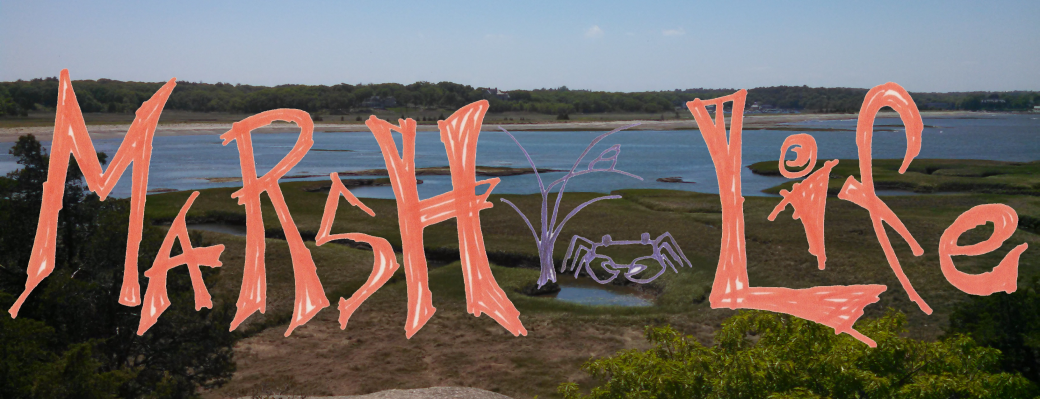Well I have never seen this before…
This video features the purple marsh crab, Sesarma reticulatum. This crab is a well known marsh herbivore (actually omnivore!) that feeds on aboveground leaves and belowground roots of the dominant marsh cordgrass, Spartina alterniflora.
The purple marsh crab is almost exclusively nocturnal, coming out at night to feed on tasty Spartina (I found one grazing last week and put up the pic in the post below). Well at least I thought it was nocturnal until yesterday, when something quite strange caught my eye!
While setting up some cages in the marsh, I saw the distinctive white claws of the purple marsh crab hanging out in the water at high tide. I ran back to the lab to snag my GoPro, and caught some amazing footage:
It takes about 6 mins flat for the PMC to eat this blade of grass all the way down. You can see early on when he climbs the blade, he grips the blade tight with his sharp, strong claws, and uses his body weight to rip the grass! Genius! Its all gravy from there!
The purple marsh crab has become famous in New England as of late because, as the story goes, its natural predators have been overfished and the PMC’s densities have increased drastically throughout its native home range. These huge population booms have been the cause of large stretches of marsh die-off in Cape Cod and out here on Nantucket.
Its not the purple marsh crabs fault though. They are just doing what they do best- munching on grass!
PS- Thanks to my cousin and overall great human being Jim Kamoosi (http://www.mooseherd.com/) for help on getting the video higher quality. Anyone who wants a perfect version can email me (mjshensel@gmail.com) and Ill share a dropbox link

